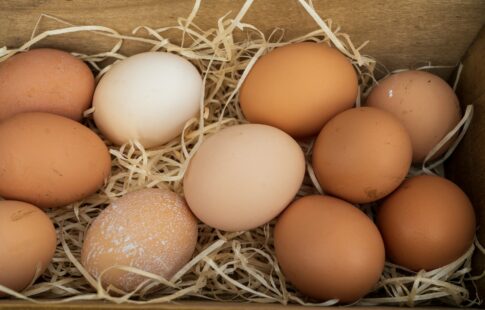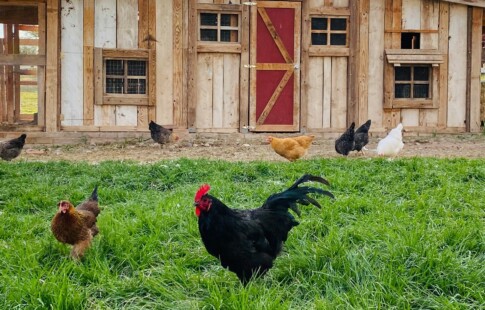
10 Benefits of Hydroponics vs. Traditional Farming
We are reader-supported. When you buy through links on our site, we may earn affiliate commission.
When was the last time you heard the phrase “hydroponics?” Maybe it was in the third season of the science fiction show “The Expanse,” which introduced a space botanist tasked with taking care of the hydroponic gardens on Ganymede in orbit around Jupiter. While hydroponics might be integral to space travel, it’s quickly becoming important in modern agriculture as well. Here are 10 benefits of hydroponics vs. traditional farming.
1. Water Use Is More Efficient
With hydroponics, you’re growing your plants in a water-based nutrient solution, but these systems use water more efficiently than any type of traditional farming and irrigation. They use up to 10 times less water than traditional agriculture because the majority of the water is captured and recycled, rather than being allowed to drain into the soil like you would with a regular farm plot or garden.
2. Better Use of Space
If you’re planting a standard garden, you’re usually looking at a single-layer of plant life inserted into the soil or in planter beds, depending on your situation. With hydroponics, you aren’t just growing horizontally — you can grow vertically, too. You’ve got the option to plant in connected racks that stretch from floor to ceiling, growing between three to 10 times as many plants in the same space that you’d use for traditional farming.
3. Faster Growth
You might be hesitant to start farming or growing a garden because it takes quite a while. You’re looking at months before you’ll have something tasty to enjoy, so why go through all the effort if you can get the same thing at your local grocery store or farmer’s market? With hydroponics, you can enjoy the fruits of your labor between 25-30% faster. Instead of spending energy creating a root system that reaches for nutrients in the soil, all of the nutrients your plants could need are delivered directly to them, allowing them to spend all of their energy growing leaves and produce.
4. Climate Controlled
Growing a garden can be challenging in many parts of the country. Your growing season might be incredibly short, especially if it gets cold early and stays cold for a long time. You might not be able to break into the frozen ground until well after the spring growing season is supposed to start. Thankfully, with hydroponics — which is usually done indoors or in a climate-controlled environment — growing seasons are a thing of the past. If you want to grow strawberries in the dead of winter, you’re more than welcome to do so as long as you’ve got the correct nutrient solution.
5. No Need for Pest Control
Traditional farming is done outside, which means you have to contend with all the bugs and pests that live there to grow your crops. While there are some challenges that are unique to hydroponics, for the most part, you won’t have to worry about pest control because you’ll be leaving all the pests outside. This also means you get to enjoy organic produce without worrying about what might have been sprayed on it or where it’s coming from, providing you with a healthier choice.
6. Job Growth
Much of the agricultural industry is worried because automation could potentially replace upwards of 60% of the jobs in the sector. Whether you work in the industry or are concerned about its future, hydroponics is a smart investment. Hydroponics and related jobs are some of the fastest-growing STEM careers in the country, and that will continue into the future as more farms, both public and private, start to adopt this technology.
7. Better Control
Adjusting the nutrients in your soil can be a challenge. Too little of one thing or another, and your plants won’t grow. Too much of something else could burn the roots of your plant and destroy your crop before it gets a chance to develop. Hydroponics relies on a water-based nutrient solution, so the process gives you more control over the exact nutrients that your plants are getting. If there’s too much of one nutrient or too little of another, you can make nearly instantaneous changes that will affect the entire system.
8. No Soil Needed
While some plants will still need soil or a soil-analog for successful growth, for most crops you don’t need a single grain of dirt to grow them in a hydroponics’ system. There’s no need for soil when you can immerse your plant’s root system directly into the nutrients they need to grow and thrive. This is ideal for space travel or even for things like the International Space Station because the liquid nutrient solution can be contained within the hydroponics system — no risk of leaks — allowing even astronauts to grow their own food while in orbit around the Earth.
9. Variable Scale
The nice thing about hydroponics, especially for private farmers, is that it’s not an all or nothing thing. You don’t have to convert a huge space into a hydroponic garden if all you need is a couple of herbs and maybe a strawberry plant. You can set up a small hydroponic system as easily as you can a big one, and you don’t have to worry about whether or not it will fit in your home or in your yard. Simply adjust the dimensions until it does. It’s also ideal for people who might not have a yard that they can turn into a garden because they live in an apartment or condo.
10. Less Mess
Let’s be honest here — setting up a garden is messy. You get dirt under your fingernails and will be scrubbing it from your knuckles for hours afterward. Skip the mess and get all of the benefits by using a hydroponics system instead. You won’t have to worry about scrubbing dirt out from under your fingernails because there isn’t any dirt involved!
Looking Forward: Hydroponics vs. Traditional Farming
As more people decide to grow their own produce as a way to improve their diets and reduce their carbon footprint, hydroponics systems will become more popular. On an industrial scale, these systems can feed more people using a fraction of the resources, and that is something that will become invaluable as the human population continues to grow.
Share on
Like what you read? Join other Environment.co readers!
Get the latest updates on our planet by subscribing to the Environment.co newsletter!
About the author
Jane Marsh
Starting from an early age, Jane Marsh loved all animals and became a budding environmentalist. Now, Jane works as the Editor-in-Chief of Environment.co where she covers topics related to climate policy, renewable energy, the food industry, and more.





